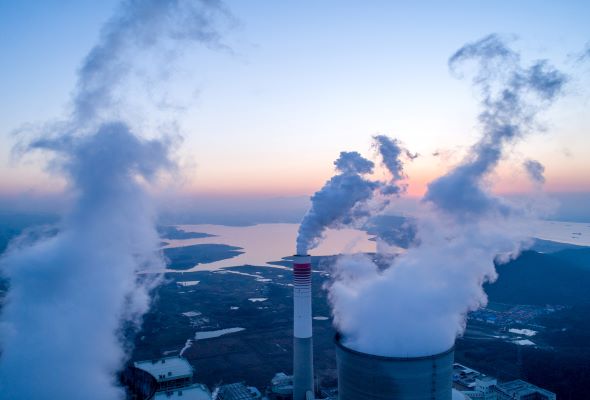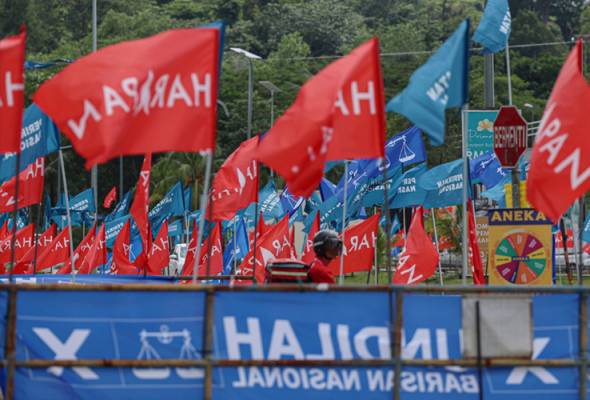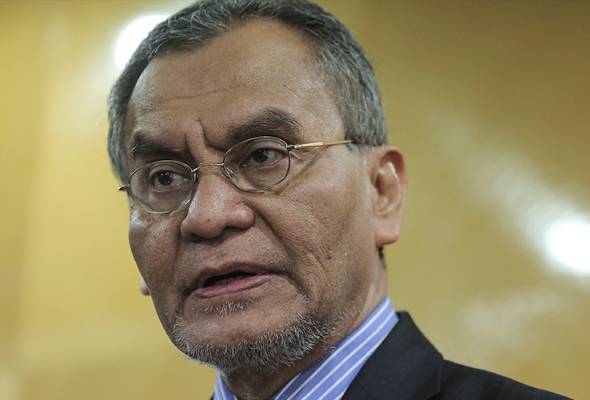
Published in Astro AWANI & theSundaily, image by Astro AWANI.
The EU is the world’s most assiduous regional bloc, par excellence, in the fight against climate change, among other policy matters. When it comes to sophisticated, complex and cutting-edge sustainable solutions and regulations on sustainability, the EU sets an eminent example for the rest of the world.
The world’s largest single market and customs union is also singularly the most prominent and pro-active signatory to international climate change treaties such as the Paris Agreement (2015) and the Vienna Convention for the Protection of the Ozone Layer.
A draft of the EU’s negotiating mandate for November 2022’s COP27 – otherwise the United Nations Climate Change Conference or Conference of the Parties of the UNFCCC (United Nations Framework Convention on Climate Change) is in the making to ensure that the 27-country bloc update their “nationally determined contributions” (NDCs). The NDCs are the contribution each country makes towards reducing carbon emissions under the Paris Agreement (2015).
The EU, as currently the world’s third-biggest emitter, has pledged to cut its net emissions by 55% come 2030 – considered as one of the most ambitious goals among major economies (see “EU plans to upgrade its Paris Agreement climate target – document”, Reuters, September 20, 2022).
The ultimate goal is Net Zero 2050. The EU’s huge market and its ambitious goals of becoming the first continent to achieve net zero carbon emissions by 2050 (“climate neutral”) have impelled policymakers to implement the European Green Deal – which will be financed by one third of the EUR1.8 trillion investments from the “NextGenerationEU” Recovery Plan (formulated in response to the pandemic).
In the meantime, the EU has been rethinking and revising its free allowance allocation policy (non-chargeable carbon credits – as a form of a pollution tax up to a certain level or threshold and, hence, functioning as an allowance) to industries considered at risk of “carbon leakage” that’s first launched in 2005 along with the establishment of EU Emission Trading System (ETS).
The ETS is currently the central mechanism to fight and achieve cost-efficient reductions of greenhouse gas (GHG) emissions for what’s in effect the world’s largest carbon market.
Carbon leakage can be defined as “… the situation that may occur if, for reasons of costs related to climate policies, businesses were to transfer production to other countries with laxer emission constraints. This could lead to an increase in their total emissions. The risk of carbon leakage may be higher in certain energy-intensive industries” (European Commission).
In July 2021, the EU Commission made a proposal for the adoption of the EU Carbon Border Adjustment Mechanism (CBAM) as a corrective measure with the aim of phasing-out the existing free ETS allowances (completely by 2030) since it failed to minimise carbon leakages – caused by the asymmetrical climate change policies of non-EU countries.
This is partly because some of the European carbon-intensive industries were still shifting their operations from the bloc to other countries to avoid strict EU environmental regulations (despite the free ETS allowances).
The aim is to leverage on the regulatory arbitrage (i.e., unequal playing field) by exporting the products back to the EU but without having to face tight customs control (see “EU carbon border adjustment mechanism – Implications for climate and competitiveness”, European Parliament, p. 3).
The EU CBAM is also an element of the EU’s “Fit for 55” package – that was formulated to strengthen efforts in reducing carbon emissions by at least 55% come 2030 via revising and updating EU legislations (regulation, directives) which have direct and indirect effect on the member-states.
At the initial stage, by 2023, EU importers must report their embedded emissions with no financial adjustment fee required during this transition period (“EU carbon border adjustment mechanism – Implications for climate and competitiveness”, 2022).
The free allowances will be completely phased out gradually between 2026-2036. And by 2026 onwards, EU and non-EU importers will have to purchase CBAM certificates based on EU carbon prices (EU ETS).
Hence, it’s worth highlighting that the EU CBAM will have a substantial impact on non-EU trading partners since it could incentivise them to (intensify) carbon adjustments and compliance by establishing similar carbon pricing policies or ETS-es. However, as pointed out by Dentons Rodyk (Singaporean law firm), businesses in Southeast Asia will experience higher export costs in the form of compliance (non-tariff) and tariff measures as a result, and this includes Malaysia.
At the same time, there’s a chain reaction and knock-on effect whereby other industry players in the supply-chain would also be compelled to adjust and comply accordingly.
Anu Bradford refers to this impact as the “Brussels Effect”.
According to her, the “Brussels Effect” is the ability of the EU to unilaterally impose, regulate, or transform global markets through a de facto externalisation of EU laws outside of the bloc’s borders/jurisdiction.
Such ability, however, is limited to the scope of inelastic targets (i.e., “captured” or “rigid” as opposed to fluid and free-flow markets) primarily based on the consumer market (e.g., privacy) and the environment (e.g., product safety), irrespective of location (i.e., encompassing both the EU as well as non-EU jurisdictions).
So, basically the EU is leveraging, capitalising and harnessing its status and position as the world’s leading single market and customs union that’s even more sophisticated than e.g., the Comprehensive and Progressive Agreement for Trans-Pacific Partnership (CPTPP) in order to impose its standards on the rest of the world (i.e., non-EU member-states).
This is why the top developing countries like China contend that the EU CBAM is “protectionist” (masked under the name of sustainability) and argue that it violates the underlying principle of NDCs as set out in the Paris Agreement (2015) which is determined solely by the national conditions and priorities, i.e., it preserves and upholds national sovereignty (see, “Less confrontation, more cooperation”, Germanwatch, June 2021).
Other countries have signalled an intention to develop their own CBAMs such as Canada’s own border carbon adjustments or BCAs (see, “Exploring border carbon adjustments for Canada”, Government of Canada).
The good news is that EU CBAM only covers five industrial sectors namely, iron & steel, cement, fertilisers, aluminium, and electricity generation.
In addition, it also specifically applies to “direct emissions” released during the production process including the companies’ vehicles for delivering goods and all on-site emissions, i.e., transportation and logistics (see, “EU CBAM implications for climate and competitiveness”, EU Parliament).
This means that there’s scope for non-EU countries to make the necessary adjustments and compliance – by a concerted and focussed effort aimed at the five strategic sectors enumerated above and their supply chain – without having to incur the additional costs that would negatively impact the rest of the domestic economy (which would translate into industrial and consumer costs).
So, what has Malaysia done so far?
For the past few years, Malaysia and the EU have enjoyed good diplomatic relations despite the contentious trade issue of palm oil.
Malaysia’s total trade with the EU grew by 26% to USD43.5 billion (RM180.2 billion) in 2021 (“Malaysia’s trade with EU rockets to RM180b in 2021”, The Malaysian Reserve, June 10, 2022). The growing trade trend bodes well for negotiations to finally materialise the Malaysia-EU Free Trade Agreement (FTA).
In light of that, businesses within Malaysia, sooner or later, will be compelled to source for least carbon-intensive inputs or resources domestically or from other countries for export to the EU market.
However, small and medium-sized enterprises (SMEs) would be significantly impacted by the CBAM since they typically lack the financial resources to invest in green technologies. In other words, they are highly exposed and susceptible to various economic pressures, as they’re part of the supply chain leading to the exports of goods and products to the EU (that’re covered under the CBAM-listed sectors).
In this respect, the EU-funded support programme (started in 2012), i.e., the Asean Regional Integration Support by the EU (Arise) Plus (+) Malaysia will play a critical role in the upcoming years to support inclusive and sustainable economic growth in the country through international trade and economic integration involving SMEs (see, “ITC: EU-funded ARISE Plus Malaysia fuels economic growth”, Intracen). The 3-year project comprises of the 3 outcomes and outputs:
- Trade policy formulation and implementation is aligned with regional and international commitments;
- Quality infrastructure system is aligned with Asean and EU standards; and
- Sustainable practices in the agri-food sector are enhanced and disseminated, in line with Asean, international and EU standards.
We see here the Brussels Effect in action, even if ever so indirectly.
The National Investment Aspirations (NIA) spearheaded by the Ministry of International Trade & industry (Miti) will position Malaysia as a potential carbon trading hub in the region with the rollout of carbon pricing mechanisms and sector-specific environmental, social and governance and climate-risk policy measures.
These will focus on five key strategic sectors, namely electrical and electronics, digital economy, pharmaceuticals, aerospace, and chemicals.
Direct effect on our domestic policies can already be seen in the Ministry of Environment and Water (Kasa)’s commitment to developing a voluntary domestic emissions trading scheme (DETS) as a preparation for EU CBAM back in 2021 (see, “Kasa to develop DETS as catalyst for domestic carbon trading sector”, Astro Awani, September 18, 2021).
EU CBAM will begin to impact Malaysia by 2026 onwards when it becomes fully operational (see “Climate and Environmental Governance: EU’s Carbon Border Adjustment Mechanism will benefit Malaysia”, The Edge Markets, February 22, 2022).
All in all, we can anticipate that the EU CBAM will somehow play a pivotal role in pushing Malaysia to become a carbon-neutral nation by 2050 and would further enhance our country’s reputation and bilateral and multilateral economic connections with both EU and non-EU partners.
On a side note, the Brussels Effect eminently demonstrates that there’s no need to be a member-state of the EU in order to gain and enjoy access to the single market (let alone join the eurozone). To an extent, regulatory alignment or dynamic equivalence can still be achieved without surrendering national sovereignty. It only requires political will on both sides.
Jason Loh and Hazriq Iqmal Abdul Aziz are part of the research team of EMIR Research, an independent think tank focused on strategic policy recommendations based on rigorous research

